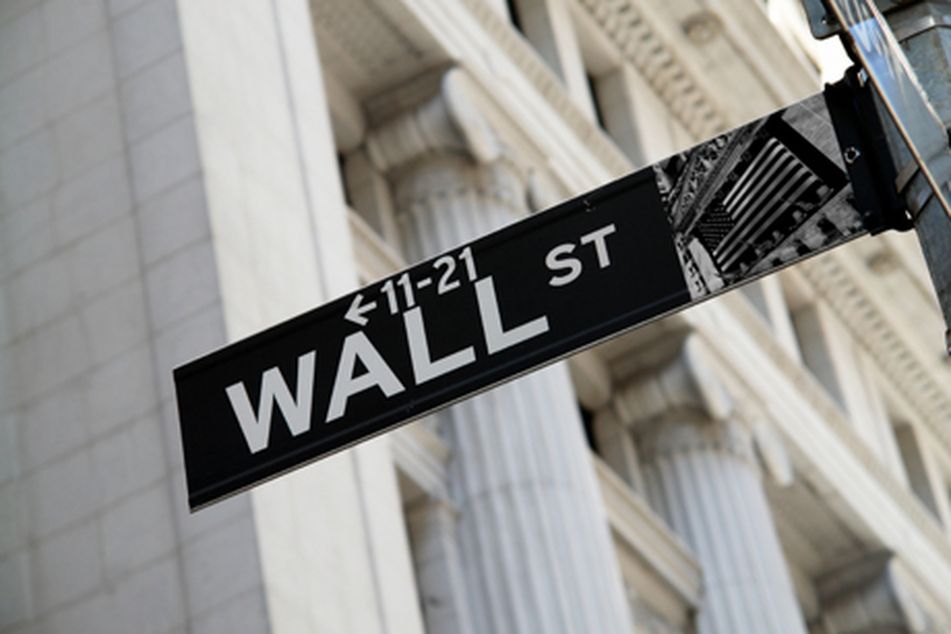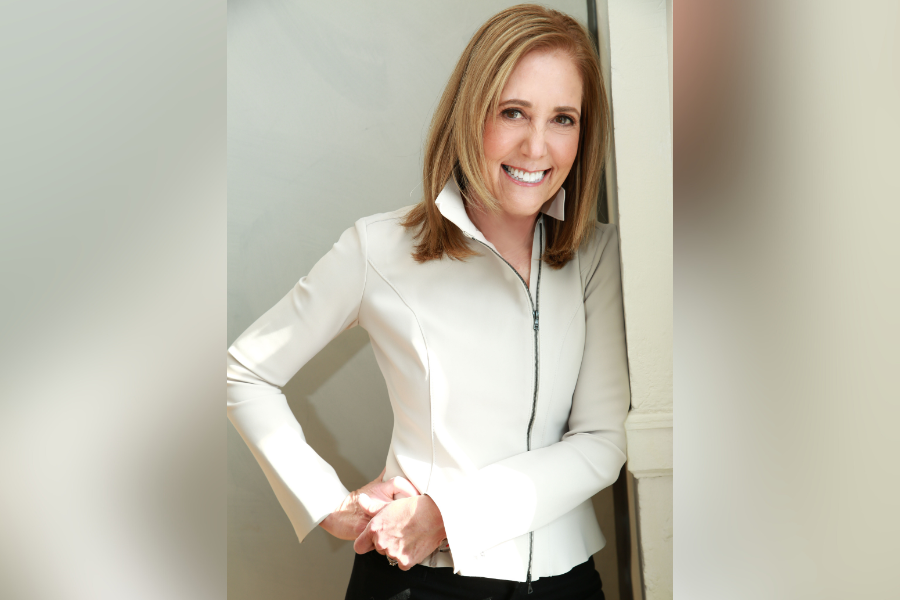Wall Street ‘bewilderment machine’ still cranking out products

Critics want regulators to zero in on 'little cancers' -- instruments that confuse buyers and generate large fees
Corowa Shire, home to Australia’s biggest hog farm and a three-hour drive from Melbourne, couldn’t be farther from Wall Street.
That didn’t stop the local council, which represents about 11,000 people, from investing A$1 million ($878,900) in one of the most esoteric inventions cooked up by the financial industry, a constant proportion debt obligation, or CPDO, with the catchy name “Rembrandt.” The top-rated note, linked to credit-default swaps on investment-grade companies, lost 93 percent of its value in two years.
“How do you have an AAA rated instrument go belly up as quickly as that one did?” asks Ian Rich, director of corporate services for the council, which is suing its financial adviser, Local Government Financial Services Pty, over the losses. “We’re very straightforward now in our investments. We’re really only investing in term deposits with major banks.”
Wall Street’s penchant for concocting opaque products — investments that lacked real-time pricing data and were so complex they could only be created and analyzed using computer models — played an important role in the worst financial crisis since the Great Depression and one that regulatory reform proposals will struggle to curtail. While banks say they’re meeting demand from investors for higher returns, critics say it’s time to rein in instruments that confuse buyers, carry hidden risks and whose main purpose is generating fees.
John C. Bogle, the 81-year-old founder of the Vanguard Group of mutual funds who has argued for tougher financial oversight, said investors have been fooled into believing they benefit from Wall Street innovations rather than bear the cost.
“The financial system subtracts value from society,” said Bogle. “Wall Street represents a cost that takes away from the proven long-term returns available in the market. That’s the reality.”
A community like Corowa never had a chance of understanding what it bought. Even if it had a model, “you really had to spend months and months playing with it and understanding exactly all of the moving parts to be able to see where the failings were,” said David Watts, a London-based strategist at CreditSights Inc. who was an early skeptic about the notes.
“I don’t think it’s the job of the financial community to bewilder its clients,” said Nicholas Brady, 80, who served as U.S. Treasury Secretary under former President George H.W. Bush. “They were making so much money they just wanted to keep the bewilderment machine churning.”
Citigroup, AIG
Over the last decade the financial industry justified the rapid growth in products such as CPDOs, collateralized debt obligations and credit-default swaps by arguing that they were sold to qualified investors who understood the risks and were able to bear them. Their view was echoed in July 1998 Senate testimony by then-Federal Reserve Chairman Alan Greenspan, who said that “regulation of derivatives transactions that are privately negotiated by professionals is unnecessary.”
A decade later his assessment was proven wrong when some of the industry’s most sophisticated participants, including Citigroup Inc. and American International Group Inc., were bailed out of bad bets on contracts whose risks they underestimated. By using government funds and cutting interest rates, politicians and central bankers laid the cost on taxpayers, savers and people living on fixed incomes.
The damage from opaque, complex products extended to communities and schools, such as Alabama’s Jefferson County and Harvard University, which paid hundreds of millions of dollars to cancel interest-rate swaps. The early 2008 collapse of the $330 billion market for auction-rate securities, products that were touted as safe, cash-like investments, led to losses for investors including the state of Hawaii.
New Rules
Now the U.S. Congress and policy makers around the world are considering ways to make the financial system safer. New rules aim to force privately negotiated derivatives — contracts whose value is tied to securities or specific events such as changes in interest rates or the weather — onto exchanges or clearinghouses, where investors will have more information about prices. Banks would also be required to hold more capital against instruments deemed too complicated to trade openly.
The U.S. Securities and Exchange Commission, the Financial Industry Regulatory Authority and the Basel Committee on Banking Supervision are considering proposals that would limit the risks from some complex products, as well as curb their growth.
The stakes for Wall Street are high. Its profit growth in recent decades has depended on an ability to devise new and increasingly opaque products.
As competition and technology eroded margins from selling stocks and bonds, the outstanding notional value of over-the- counter derivatives climbed to $614.7 trillion at the end of 2009 from $88.2 trillion 10 years earlier, according to the Bank for International Settlements. That’s more than seven times the notional amount of exchange-traded futures and options outstanding, BIS data show, and more than 10 times the world’s annual gross domestic product.
Over the same period, financial-industry profits in the U.S. surged to $414.1 billion, or 36 percent of all domestic corporate profits, from $224.9 billion, or 29 percent, according to U.S. Commerce Department data.
‘Exotic Instruments’
“The more complex, generally speaking, the more profit there’s going to be for the derivatives dealer,” Warren Buffett, the billionaire investor who controls Berkshire Hathaway Inc., told the Financial Crisis Inquiry Commission on June 2. As contracts like interest-rate swaps became commonplace and profit margins eroded, banks “embedded more exotic instruments, and that’s where the money was,” Buffett said.
One of those exotic instruments, a synthetic collateralized debt obligation known as Abacus, is at the center of a lawsuit brought by the SEC against Goldman Sachs Group Inc. Unlike regular CDOs, created by pooling bonds, loans or asset-backed securities whose cash flows derive from payments on mortgages or other types of debt, synthetic CDOs package credit-default swaps, which are themselves derivative side bets on the value of debt instead of the debt itself.
Misleading Investors
The government suit alleges New York-based Goldman Sachs misled investors by failing to tell them a hedge fund that planned to bet on the deal’s failure had played a role in selecting the underlying swaps. Goldman Sachs has called the case unfounded, saying that the buyers were sophisticated investors capable of analyzing the contracts independently.
Trading stocks listed on exchanges was once a lucrative business for Wall Street. That changed on May 1, 1975, when regulators abolished fixed commissions and opened the markets to price competition. The move accelerated brokers’ efforts to create more complicated, less commoditized investments.
One avenue was through private placements, a way for companies to raise funds by selling unregistered securities to accredited buyers with limited disclosure.
Rule 144a
Private placements were first permitted under the Securities Act of 1933. In 1990, the SEC adopted Rule 144a to make offerings more appealing to qualified institutional buyers, known as QIBs, who had more than $100 million in assets, by eliminating a two-year holding period.
The SEC also passed Regulation S that year, permitting firms to sell securities to foreign buyers without registering them in the U.S. Goldman Sachs’s Abacus CDO was offered to Germany’s IKB Deutsche Industriebank AG under Regulation S and to New York-based ACA Management LLC under Rule 144a.
“There was a feeling that the commission had been tight- fisted with the rules before then and that the markets were sophisticated enough for people to analyze these private offerings,” said David Martin, a partner at Covington & Burling LLP in Washington and head of the SEC’s corporate finance division from 2000 to 2002.
Junk Bonds, CDOs
Rule 144a and Regulation S opened the door to a proliferation of products traded outside public exchanges, including junk bonds and asset-backed securities. Global sales of asset-backed securities, including bonds linked to mortgages, commercial real estate loans and CDOs, climbed to more than $2.68 trillion in 2006 from $51.5 billion in 1990, according to data compiled by trade magazine Asset-Backed Alert.
By 2000, CDOs backed by corporate loans and junk bonds, almost all of them done as private placements, were a fast- growing segment of the asset-backed securities market. Global issuance of all types of CDOs jumped to a peak of $482 billion in 2006 from $5.7 billion in 1995, the magazine’s data show.
When the economy soured in 2001, one company that took a hit was American Express Co.’s financial advisers unit, which was later spun off to become Ameriprise Financial Inc. It recognized about $1 billion in pretax losses in the first half of the year from junk bonds and CDOs made up of junk bonds.
“What you’re seeing now in the Abacus transaction is similar to what happened in junk bonds and the CBO and CLO market,” said Satyajit Das, a Sydney-based former derivatives banker at Citigroup and Merrill Lynch & Co. and author of “Traders, Guns & Money,” referring to CDOs backed by bonds or loans. Those losses “should have given people an inkling that maybe this was a little more complicated than people thought.”
13 Boxes, 14 Arrows
Instead, Wall Street created more complicated products, such as CDOs that bundled pieces of other CDOs or credit-default swaps. In the case of Abacus, the pool was made up of credit- default swaps on 90 residential mortgage-backed securities with the second-lowest investment-grade rating, according to a Goldman Sachs sales document. Each of the 90 securities contained thousands of loans and was described in a prospectus that ran hundreds of pages. A one-page diagram of the structure in the document showed 13 boxes connected by 14 arrows.
Goldman Sachs, the most profitable securities firm in Wall Street history, is also being sued by Australian hedge-fund company Basis Capital over another synthetic CDO known as Timberwolf bought by its Basis Yield Alpha Fund (Master). Basis says that Goldman Sachs benefited from the market’s opacity and that the investment bank, whose internal e-mails showed an executive called the deal “shi**y” the same week Basis was completing its purchase, hoped to profit from a bet against it.
‘Little Ability’
“Because Timberwolf and similar CDOs were not publicly traded and were illiquid, BYAFM had little ability to obtain information about prevailing prices” for the deal, the fund’s complaint says. “In contrast, Goldman, because of its market position, was uniquely knowledgeable not only about Timberwolf but about the market for CDOs in general.”
Goldman Sachs said in a statement on June 9 that Basis made its investment at market levels it deemed attractive, that the fund had agreed not to place any reliance on Goldman Sachs and that Goldman Sachs had itself lost “several hundred million dollars” on Timberwolf securities.
Investors were tempted into such purchases because they promised the same low risk as owning high-quality debt like U.S. government bonds with better returns. That enabled fund managers to beat AAA rated benchmark indexes, said Das, who began his financial industry career in 1977.
‘Beat the Index’
“If you’re going to sell somebody any structure — I learned this 25 years ago — you don’t really need to talk about the product,” Das said. “You simply need to say, ‘Your index is this, and if you do this over the next quarter or two quarters, you’re going to beat the index by X.’”
It wasn’t only the clients who couldn’t resist the promise of boosting returns without adding risk. Financial companies including Citigroup, Merrill Lynch and Zurich-based UBS AG also lost billions after buying and holding onto the AAA rated portions of CDO debt.
The bets soured when mortgage-backed securities underlying the deals declined in value after defaults on subprime home loans made to unqualified borrowers prompted downgrades of the debt. Only a few market participants saw the trouble brewing, including Goldman Sachs, whose executives began looking for ways to bet against securities tied to subprime debt in late 2006.
“Banks should be limited in how many of each instrument they’re allowed to trade,” said Paul Wilmott, a London-based author and quantitative-finance instructor who has also been a critic of the industry’s over-reliance on mathematics and statistics. “Otherwise it’s dangerous, and it’s not just dangerous to your bank and your clients, it’s dangerous to innocent people as well.”
Rembrandt CPDO
That’s what residents of Corowa Shire discovered after their local council bought Rembrandt CPDO notes in November 2006 that were issued by ABN Amro Holding NV, a Dutch bank later split up and sold to banks including Edinburgh-based Royal Bank of Scotland Plc. The deal helped lead to RBS’s collapse and takeover by the U.K. government.
ABN Amro created the first CPDO earlier that year, an AAA rated note called Surf yielding twice the rate of other bonds that were barely investment grade. It did this by selling credit-default swaps on two indexes of 250 North American and European companies with investment-grade ratings. Credit-default swaps act like insurance because the seller collects premiums in exchange for promising to pay the buyer if the reference securities, in this case corporate bonds underlying the index, suffer losses or a default.
AAA Rated Notes
CPDOs were allowed to sell protection on bonds with a value of up to 15 times the cash in the investment pool. Leverage was adjusted depending on the performance of the underlying swaps, and companies with deteriorating ratings were purged from the index every six months.
The Rembrandt CPDO offered investors AAA rated notes that paid 1.9 percentage points above Australia’s three-month bank- bill swap rate, or about 8.25 percent at the time, according to a suit brought by 10 councils in Australia’s federal court against Local Government Financial Services, which manages money for towns in New South Wales.
Rich, 48, who oversees Corowa’s $14 million in investments, said he depended on LGFS for all of his information about Rembrandt. LGFS is suing ABN Amro and ratings company Standard & Poor’s, asserting that it was misled. LGFS Chief Executive Officer Peter Lambert didn’t respond to an e-mailed message.
All But Worthless
ABN Amro, in a defense document received by the court on June 2, denies it engaged in any misleading or deceptive conduct and says LGFS had “sole responsibility” for determining whether the Rembrandt notes were appropriate investments. Paul Nicols, a partner at law firm Allens Arthur Robinson in Sydney who is representing ABN Amro, declined to comment on the case.
Frank Briamonte, a spokesman for McGraw-Hill Cos., which owns S&P, said the claim is “without legal or factual merit, and we will defend ourselves vigorously against it.”
The Dutch bank wasn’t alone in selling CPDOs. From 2006 to 2007, firms including UBS, JPMorgan Chase & Co. and Lehman Brothers Holdings Inc. created their own notes, selling more than $4 billion of them to investors in six currencies, according to data compiled by CreditSights.
By the end of 2008, the securities were all but worthless. Banks, hedge funds, insurance companies and other fixed-income asset managers rushed to buy default protection through the derivatives indexes underlying the CPDOs, sending the cost of the indexes to record highs and deflating the value of the notes. The Australian councils that bought Rembrandt received less than 7 cents on the dollar after the value fell to a level that triggered an unwinding of the deal to prevent a total loss, according to the lawsuit.
‘Not Informed’
The councils “were not informed that the proceeds of the notes would become the subject of a complex derivatives contract, whereby ABN Amro London would use the proceeds of the notes to take a notional position against a portfolio of credit- default swap indexes,” said Amanda Banton, a partner at law firm Piper Alderman in Sydney, which represents the councils.
CPDOs were the “most egregious example of this wave of financial innovation, but it’s different in degree not really in kind,” said Frank Partnoy, a professor at the University of San Diego School of Law and a former derivatives trader and author of “Infectious Greed: How Deceit and Risk Corrupted the Financial Markets.”
“Most financial innovations benefit Wall Street banks, not the ultimate savers or borrowers,” he said.
Derivatives Reform
U.S. lawmakers will this week continue negotiating over reform legislation that aims to prevent a future financial calamity, including limiting the risks created by complex, hard- to-value instruments.
The legislation would bring most of the over-the- counter derivatives market under regulation for the first time, requiring the most actively traded contracts to be moved through central clearinghouses and traded over regulated platforms that would increase price transparency.
For derivatives that are too complex to be cleared, regulators will require dealers and major market participants to hold “substantially higher” capital against the trades, according to a bill approved by the Senate that’s now being reconciled with one passed by the House of Representatives.
Still, Stephen Cecchetti, a former Federal Reserve official now head of the monetary and economic department at the Bank for International Settlements in Basel, Switzerland, warned in a June 16 speech in New York against allowing too many exemptions.
“The argument typically advanced in favor of non- standardized OTC derivatives is that markets need tailored hedging tools,” Cecchetti said. “I would argue, however, that one can design standardized contracts for nearly all risk types and that standardized contracts are very good hedging tools.”
‘Little cancers’
Another move toward greater transparency was the SEC’s approval in February of a proposal by the Financial Industry Regulatory Authority, the self-regulatory industry group known as Finra, to end an exemption that allowed asset-backed securities to trade without reporting prices to Trace, which publishes corporate bond trades. Starting next February, traders must report prices, though Finra won’t decide whether to make them public until it has studied the data, Finra said.
Some industry veterans doubt that the proposed laws and regulations will make a significant difference. Richard Breeden, who led the SEC from 1989 to 1993 when Rule 144a was issued, said at a conference in Washington last week that new rules won’t matter unless regulators gain the courage to make banks smaller and less profitable. Alan “Ace” Greenberg, the 82- year-old former chairman of Bear Stearns Cos. who is now a vice chairman emeritus at JPMorgan, told an audience at New York’s 92nd Street Y last week that he doesn’t expect regulation to damage the industry.
“I really don’t,” said Greenberg, who has worked on Wall Street since 1949. “Regulation never hurt our business.”
While CPDOs survived only briefly, other types of complex products continue to thrive after the financial crisis. One area that’s still growing is structured products, registered securities that combine features of bonds and derivatives and are sold in small, illiquid batches, often to retail investors.
Sales of structured products to U.S. retail investors may set a record this year, with $21.5 billion sold through June 8, according to StructuredRetailProducts.com, a database used by the industry. Sales fell to $33.9 billion last year after peaking at $37.6 billion in 2008.
“Even investors that got burned are back buying these things,” said Marilyn Cohen, president of Envision Capital Management in Los Angeles, who manages $270 million in fixed-income assets. “They’re like little cancers in finance.”
Proponents of the notes argue that they’re registered securities with full disclosure to investors and that they offer buyers tailored bets that they couldn’t get elsewhere. And while many of the notes are sold to retail investors, others are limited to institutional buyers.
One Word: Contag Beta Alternate Benchmark Clas A Excess Return Index
One example of a structured note sold to an institutional investor is JPMorgan’s May 10 sale of $150 million of one-year notes whose returns are linked to an algorithmic trading system for commodity futures known as the J.P. Morgan’s Contag Beta Alternate Benchmark Class A Excess Return Index. The index measures hypothetical returns achieved by using a set of rules for trading in and out of 19 commodity-futures contracts.
Justin Perras, a spokesman for JPMorgan in New York, declined to comment.
“There are a lot of unanalyzable financial products — including some stocks — but it’s ultimately the responsibility of the end-user investor to understand, or retain someone who understands, what they own,” said Orin Kramer, general partner of hedge fund Boston Provident Partners LP, who is on leave from his role as chairman of New Jersey’s Investment Council, which oversees the state’s pension fund.
Learn more about reprints and licensing for this article.








